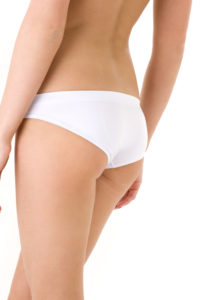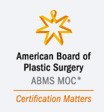

Lipoplasty, more commonly known as liposuction, can be an excellent choice for those who have already reached their ideal weight by exercising and dieting but still have a few stubborn areas of fat that they cannot shed. It differs from a tummy tuck or other cosmetic surgery procedures used to address sagging skin, and when performed alone, the skin is expected to contract on its own. However, it can be combined with plastic surgery procedures like tummy tucks to help remove fat and tighten skin at the same time.
How Liposuction Works
A liposuction treatment typically begins with a consultation to determine if someone is the right candidate for the procedure. A plastic surgeon will listen to a new patient’s concerns, conduct an examination to determine physical and emotional fitness and ask questions about lifestyle and expectations from the operation. Specific body shape goals and general health can help to determine a good candidate.
Liposuction is typically an outpatient procedure where general or “twilight” anesthesia is combined with localized anesthesia. It lasts approximately 1-3 hours but may vary depending on which area is chosen. Fat is surgically removed with an instrument called a cannula, which is connected to a vacuum to aid removal.
Where Liposuction Can Be Done
Liposuction can be done on most of the areas of outer fat (e.g. non-visceral fat) along the body. Typical locations where this procedure is done includes the neck, arms and torso, abdomen and back, hips and thighs, and knees and ankles.
Pros & Cons of Liposuction
As with any procedure, liposuction comes with benefits and some drawbacks. Liposuction can target the specific, disproportionate areas of the body that do not respond well to a healthy regimen of nutrition and activity. By removing the fat, the surgeon can contour your body to the shape you desire. Although scars can occur, they are usually minimal since incisions are very small.
Liposuction is a surgical procedure, which means that there is an inherent risk that comes both from the operation. Liposuction is not a good fit for people who wish to fix saggy skin or who are looking for a weight loss solution. Seattle based plastic surgeon, Dr. Shahram Salemy notes that liposuction is typically not performed on a large volume of fat as there is a limit on how much can be done in one operation. Candidates who have substantial excess fat with thin loose skin risk having skin that’s wavy, uneven and lumpy after surgery because the skin cannot sit evenly.
Liposuction candidates should instead be already at their target weight to be good candidates. Following surgery, there may be pain and bruising. A plastic surgeon will recommend time off of work to recover, typically between five and seven days.
Liposuction vs. Tummy Tuck: How they Differ and the Benefits of Combining Them
People who have trouble losing weight in their abdomen and have loose skin may want to consider combining liposuction with a tummy tuck to tighten and contour the stomach. While liposuction removes stubborn fat pockets, a tummy tuck will remove a section of the loose skin, excess fat and tighten the muscle in the abdominal area. Liposuction and tummy tucks often work well together to contour and sculpt the midsection.
Overall there are three different tummy tuck types:
- Mini: Designed for those with excess skin and lax muscles in their lower abdomen, this technique requires a short incision and addresses skin and lax muscles.
- Full: This is the typical surgery. It requires a hip-to-hip incision and a cut around the belly button. Muscles are surgically tightened, fat is removed and excess skin is cut away before reattaching.
- Extended: This offers a full tummy tuck but with longer incisions. The goal is to address the abdomen in patients with significant excess skin, in particular after massive weight loss.
How to Determine a Good Liposuction Candidate
Ideal candidates have a healthy lifestyle, are in good general health overall to respond well to surgery, do not smoke, and have a realistic expectation of the results. They have one or two stubborn body areas that diet and exercise have been unable to fix. The area in question is disproportionately larger than the rest of the body. Candidates who get the most benefit from liposuction have modest excess fat and good skin quality that will most likely tighten smoothly after surgery.
How to Maximize Results Before and After Surgery
Before the operation, patients need to cease nicotine use, avoid aspirin and other medications as instructed by the surgeon, be well hydrated and rested, as well as reach their ideal body weight range and weight goals and incorporate necessary lifestyle changes. They may follow their normal routine up until the day before surgery including moderate exercise, but they must not eat or drink twelve hours before the actual procedure.
Following surgery, it is important for patients to comply with the care instructions given for optimal recovery. Although recovery time may vary greatly among individuals, there are a number of steps that, if followed, can speed healing and maximize results:
- First Two Weeks After Surgery: The surgeon will give instructions on how to care for any remaining drains or bandages. Patients should monitor themselves for any increase in redness and swelling, and wear their compression garments for the allotted time. Physical activities should be limited including straining and bending. Follow instructions for prescribed medications. Avoid smoking and alcohol consumption. Follow-up appointments with the surgeon is important, who will check on post-surgical progress and remove sutures.
- Two to Six Weeks Following Surgery: Compression garments should be worn for four to six weeks, as prescribed by the surgeon. Walking is encouraged to avoid blood clots.
Long Term: The results of the surgery will take more than six weeks to finalized as the newly contoured body will continue to heal. Patients should continue to follow any care instructions and attend any follow-up visits with their surgeon.
Choosing a Plastic Surgeon
There are three basic qualifications to look for in a plastic surgeon. They should be board certified in plastic surgery, which means that they have demonstrated and proven their expertise and are highly qualified to perform these procedures. They should be experienced in the kind of liposuction procedure and the body area that the patient is looking for. They should also be committed to working with their patients to select the right plastic surgery procedure for their individual needs.
Questions to ask when choosing the right plastic surgeon include:
- How long they have been performing liposuction?
- What kind of liposuction procedures they perform?
- Which liposuction procedures they prefer and why?
- What board certifications and hospital privileges they have?
- What are the typical risks and complications?
Questions to ask During Consultation:
- What kind of results can I expect? What would the reduction look like (in inches)?
- How long will the procedure take?
- Is this something that should be done alone, or in conjunction with other body contouring surgeries?
- Which liposuction techniques do you prefer and why?
- Where will my incision be and how will it heal?
- What does the recovery time look like?
- How long before post-surgical swelling subsides?
- What is needed prior to and after surgery?
- May I see before and after photos of the procedure I will be undergoing?
- What is the cost, are payment plans available?
- Can liposuction be performed during a mommy makeover or mommy makeover surgery?















